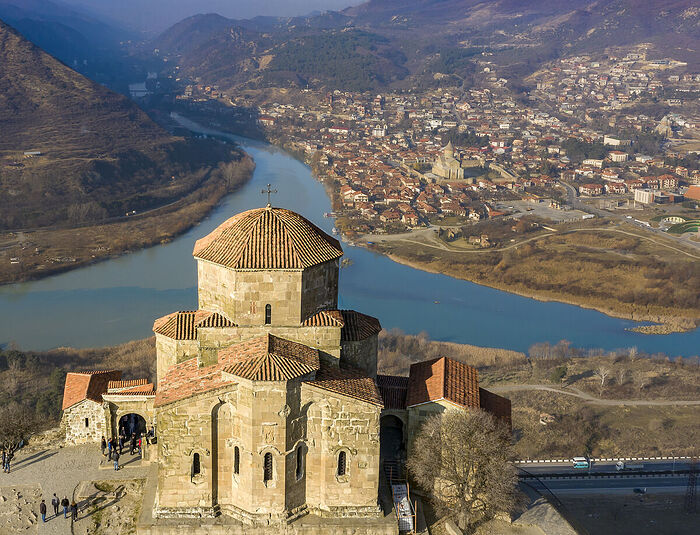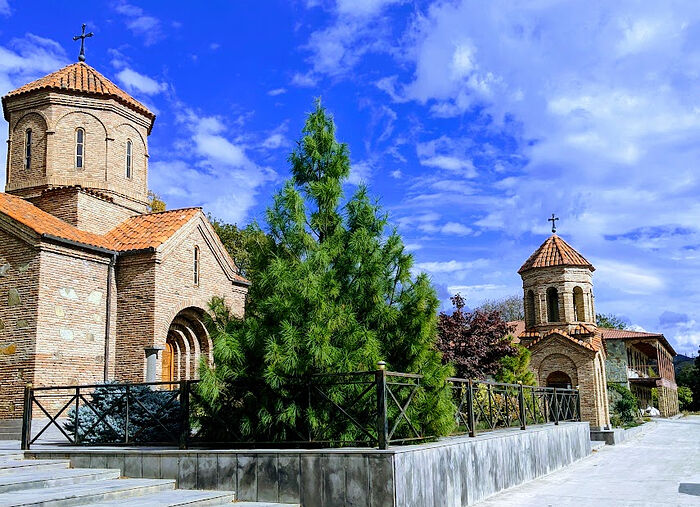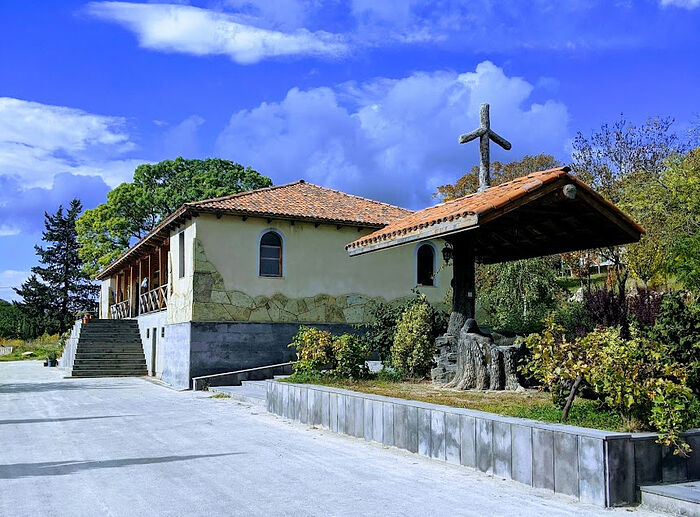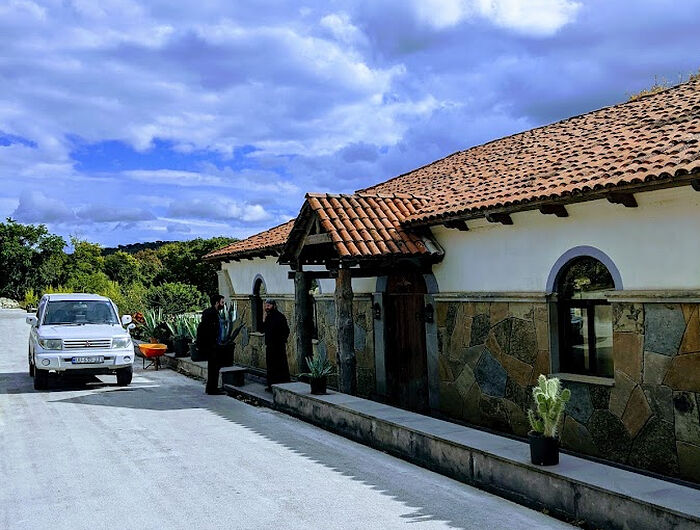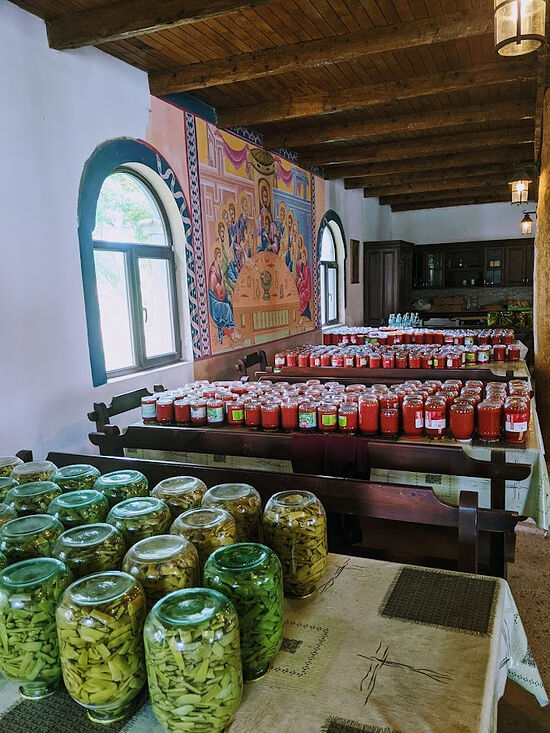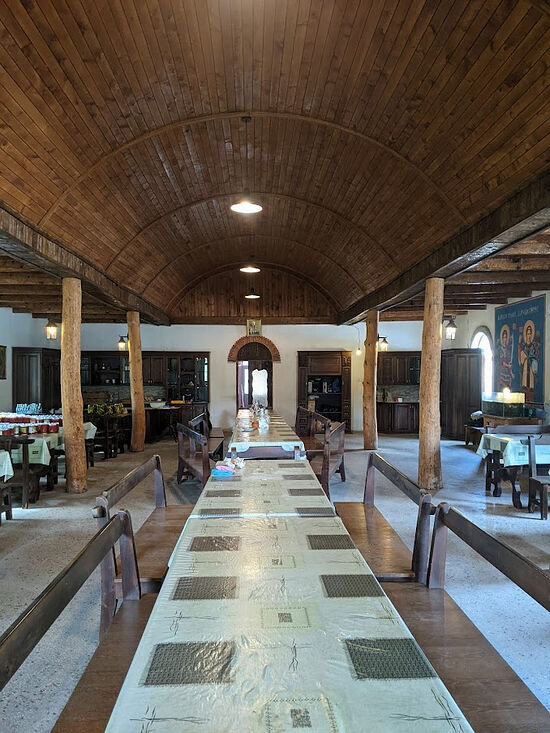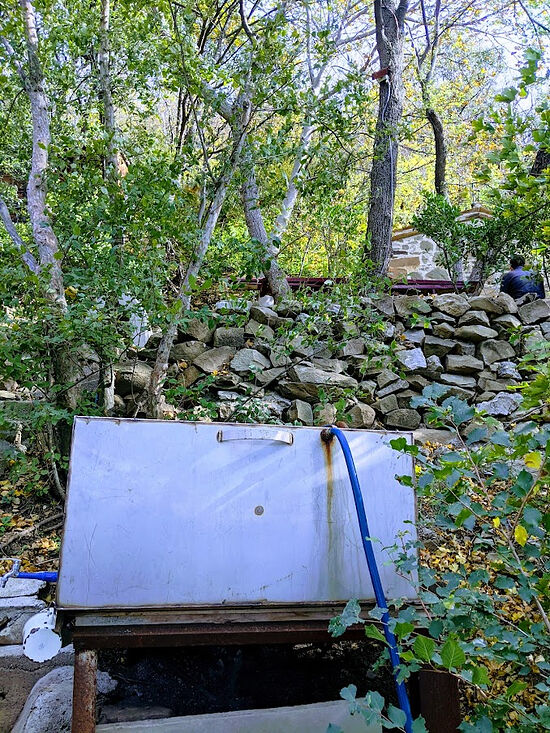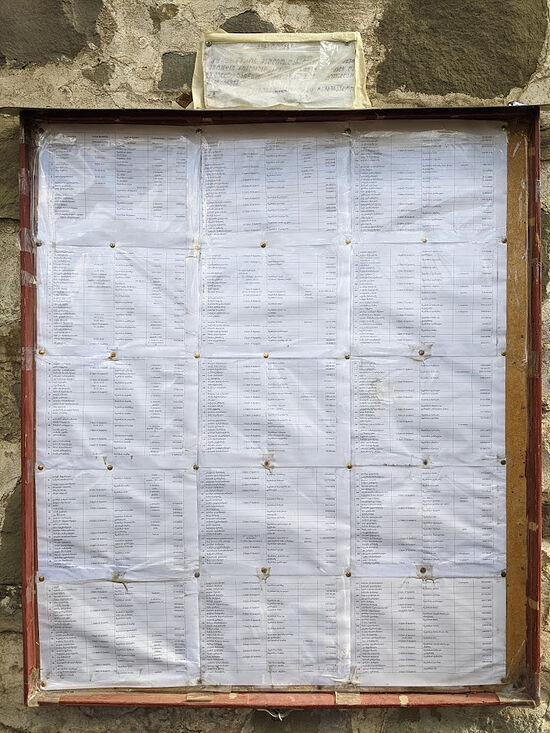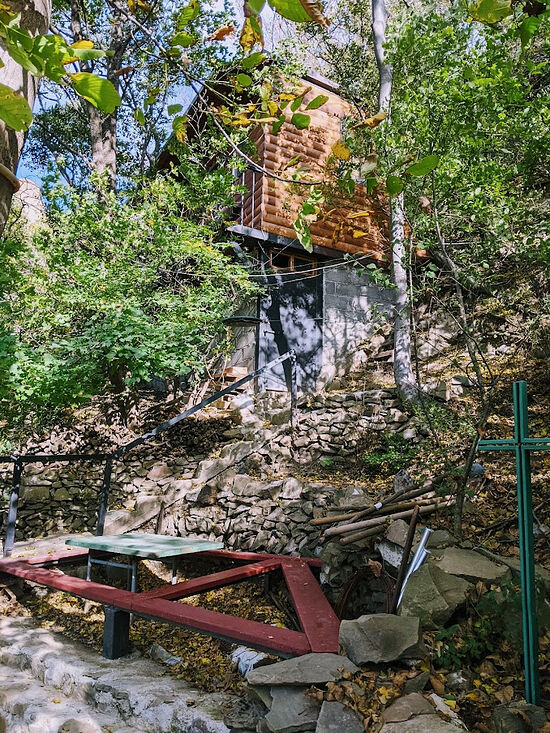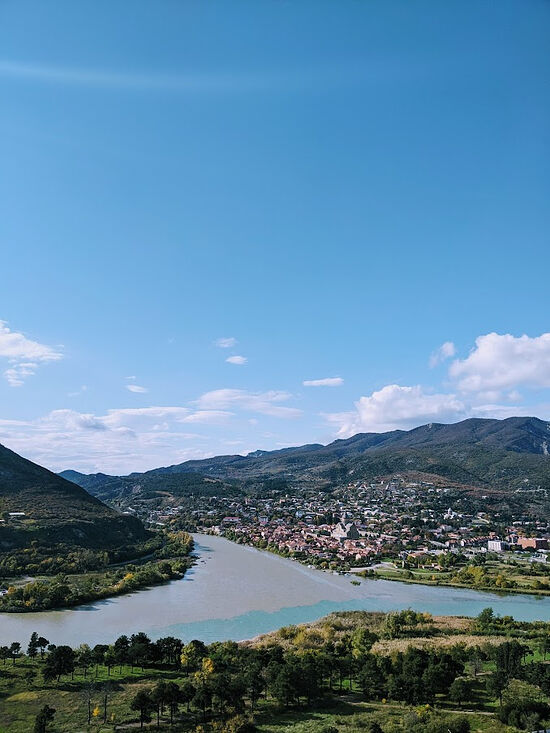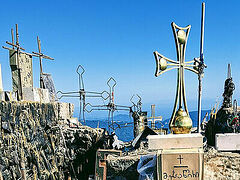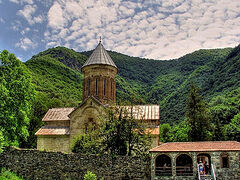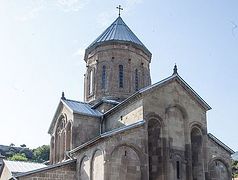Within the nation of Georgia, there are numerous holy sites that are located within an hour of the nation’s capital of Tbilisi and are connected with the conversion of the Georgian nation itself to the Christian faith in the fourth century AD. One of the most prominent among the consciousness of the Georgian people is the Holy Cross (Jvari) monastery located roughly twenty kilometers (twelve miles) from Tbilisi. This is mainly because of the connection that Jvari has with the life of the Equal to the Apostles St. Nino (Nina), who was brought to this part of eastern Georgia by Mtsketan shepherds as explained within the following quote from her biography, “She then traveled to Mtskheta with a group of Georgians who were making a pilgrimage to venerate the pagan idol Armazi. There she watched with great sadness as the Georgian people trembled before the idols. She was exceedingly sorrowful and prayed to the Lord, ‘O Lord, send down Thy mercy upon this nation …that all nations may glorify Thee alone, the One True God, through Thy Son, Jesus Christ.’ Suddenly a violent wind began to blow, and hail fell from the sky, shattering the pagan statues. The terrified worshipers fled, scattering across the city.”1 On the site of this former temple dedicated to the worship of the false gods would be erected a large cross, which would be the focal point for the newly enlightened Georgian people to worship the One True God. During her time of evangelization in Georgia, St. Nino would speak not only about Our Lord Jesus Christ but also her cousin St. George whom the Georgian people hold as their dearest national patron saint.
In the late sixth century, the church would be greatly enlarged into what is currently seen when visiting this holy site, despite the repeated invasions against Georgia by numerous different empires and the neglect that the Church suffered during the time of the Soviet godless authority. The objective beauty of Jvari monastery even in the modern age despite these difficulties can be seen in the following quote from the World Monuments Fund (WMF), “The building techniques and high standards of engineering, as well as the diverse decorative program, of the landscaped monastery, exemplify exceptional centuries-old Georgian building practices alongside a wide range of Eastern and Western aesthetic traditions.”2
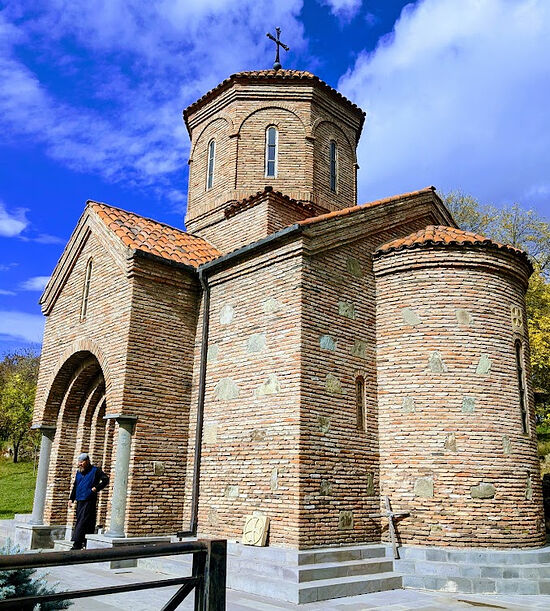 Jvari Monastery Brotherhood Church Unexpected Joy of the Theotokos
Jvari Monastery Brotherhood Church Unexpected Joy of the Theotokos
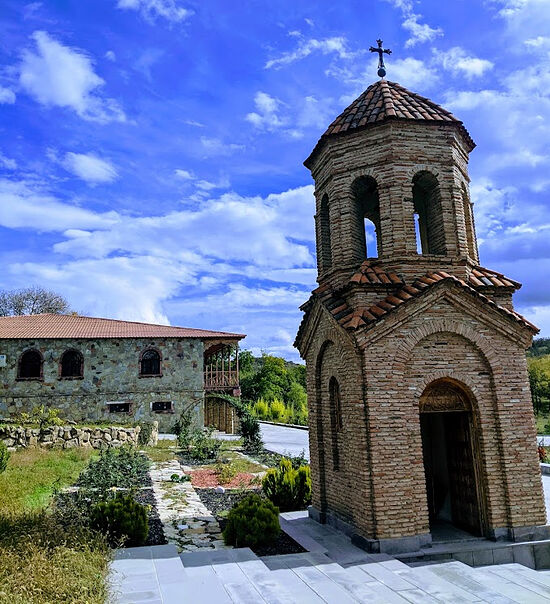 Jvari Monastery Brotherhood Buildings
Jvari Monastery Brotherhood Buildings
Efforts to fully restore the Church in its original form have been difficult due to the original building records in 1991 (shortly before the independence of Georgia from the Soviet Union) being lost in a fire and from the degrading effects of increasingly worsening acid rains that have been correlated alongside the growth of Tbilisi as a city. However, despite these problems, the base of the cross that St. Nino placed in the fourth century can still be seen, and pilgrims from across Georgia venerate with great respect this holy relic from the time of their people’s conversion. Historically, this cross was venerated not only by Georgians but also by believers from all across the Caucasus region (modern-day Azerbaijan, Armenia, and southern Russia).
With this being said, little is known within Georgia and around the Orthodox world about both the spring of St. Nino located a short distance away from Jvari monastery and the brotherhood of the monastery. In the case of the brotherhood of Jvari monastery, it is unknown precisely when the monastic presence started at Jvari, but it was most likely sometime after the establishment of monasticism in Georgia by the Thirteen Assyrian Fathers in the sixth century AD.3 Like the majority of monasteries after this time period, the Jvari brotherhood would suffer a gradual state of decline in the centuries after the Golden Age of Georgia, which would culminate in the destruction of the brotherhood by the godless Soviet authorities who turned the monastery property into a Young Pioneer camp for the Soviet youth.4 However, through the mercy of God since 1992, the brotherhood is flourishing with roughly twenty monks of all ages, and the new construction of a sizable trapeza hall, a church in 2006 named and consecrated by Patriarch Ilia after the Unexpected Joy of the Theotokos, living quarters for the monks, and agricultural lands that are productive enough for the needs of the brotherhood.
Regarding the healing spring of St. Nino, this is located a short walk on a trail descending from the Jvari Church and can be reached in roughly fifteen minutes. This spring of St. Nino should not be confused with another healing spring associated with the life of St. Nino, which is located one and a half kilometers from Tbilisi at the monastery of St. Nino in Bodbe.5
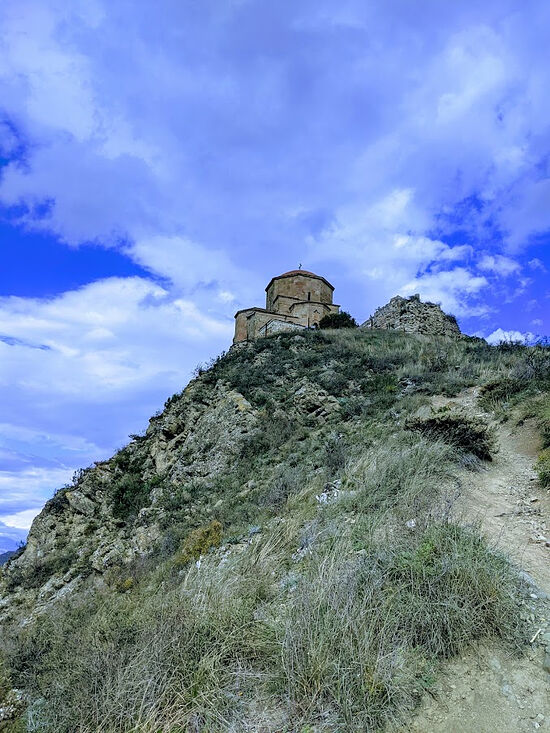 Trail to the Spring of St. Nino
Trail to the Spring of St. Nino
There is a small temple named after St. Nino constructed here, which was where the saint knelt and prayed for the conversion of Georgia. The spring located nearby was blessed by St. Nino herself, and her tears are mixed inside with unique properties that make it taste like breast milk (hence the name milk-giving font; ძუძუს წყარო). Noted at the source of the spring are the hundreds of miracles that have been recorded since the early 2000s regarding this holy water, especially for women (infertility, breast cancer, etc.), and a cleansing of the gastrointestinal tract has also been noted.
For those drinking this holy water, it is advised to pray the “Our Father” and Troparion to St. Nino before doing so with only a very small amount (10-20 grams) needed to sanctify regular water.6
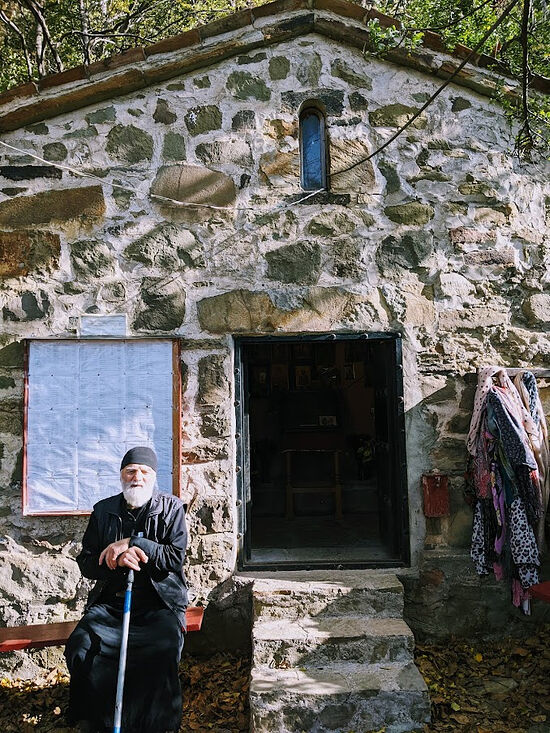 Father Zabulon and the Chapel of St. Nino at Jvari
Father Zabulon and the Chapel of St. Nino at Jvari
The location of the spring itself has been furthermore sanctified from the hermitical monastic life of Father Zabulon, who has lived out his monastic life at this location and who educates pilgrims from around the world regarding the spring and the life of St. Nino.
Overall, the combination of the Jvari Church, brotherhood, and spring of St. Nino make this one of the holiest locations for Orthodox pilgrims to visit during their time within the nation of Georgia.

